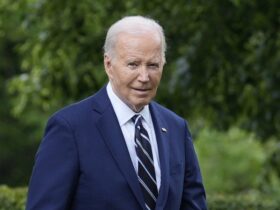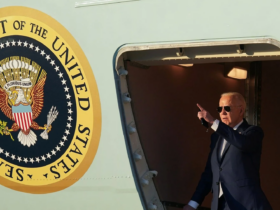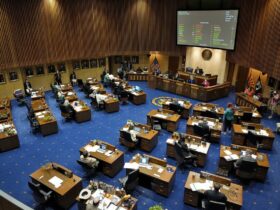United States: SpaceX engineers were ready to launch the military’s covert X-37B robot spaceplane on its seventh trip on Thursday. It was the first time it had been launched on a rocket that might take it to a higher orbit than ever before, following weeks of false starts and delays, according to Reuters.
The launch window lasted for just ten minutes; at 8:07 pm EST (0107 GMT Friday), the SpaceX Falcon Heavy rocket was scheduled to launch into the night sky from NASA’s Kennedy Space Center in Cape Canaveral, on Florida’s Atlantic coast.
Due to bad weather and unclear technical difficulties, three launch countdowns were canceled earlier this month. As a result, ground technicians had to roll the spaceship back to its hangar before trying again with the most recent attempt.
It occurred two weeks after China’s reusable robot spacecraft, dubbed the Shenlong, or “Divine Dragon,” launched on its third orbital voyage since 2020, introducing a fresh dimension to the developing space rivalry between the United States and China.
There was an 80 percent possibility of suitable launch circumstances, according to the most recent weather forecast for Thursday’s mission.
Some facts about the X-37B have been disclosed by the Defense Department, which was conducted by the US Space Force under the military’s national security space launch program, according to Reuters.
Approximately the size of a small bus and bearing a resemblance to a miniature space shuttle, the Boeing-built spacecraft is designed to carry out technology experiments and deploy different payloads during extended orbital trips. When the operation is over, the vessel returns via the atmosphere and lands on a runway like an airliner would.
Since 2010, it has completed six (6) missions. The first five were carried out as a joint venture by Boeing and Lockheed Martin, utilizing United Launch Alliance-launched Atlas V rockets. Recently, the mission used a Falcon 9 booster furnished by Elon Musk’s SpaceX, which took place in May 2020.

The Falcon Heavy rocket, capable of carrying payloads heavier than the X-37B even deeper into space due to its increased strength, possibly into geosynchronous orbit, which is more than 22,000 miles (35,000 km) above the Earth, making it the first of its kind.
Orbital Test Vehicle, also called X-37B, was previously confined to flying in low-earth orbit at heights under 1,200 miles.
NEW ORBITAL REGIMES AND SEEDS
How high the spacecraft would travel this time around has yet to be disclosed by the Pentagon. However, the Air Force Rapid Capabilities Office stated in a statement released last month that mission No. 7 will entail testing “new orbital regimes, experimenting with future space domain awareness technologies.”
A NASA experiment to investigate the effects of extended exposure to the extreme radiation environment in space on plant seeds is also being carried out by the X-37B. The capacity to grow food in space will have a significant impact on astronauts’ ability to sustain themselves on extended lunar and Mars missions in the future.
According to reports by Reuters, China’s equally clandestine Shenlong was launched into space on December 14 by a Long March 2F rocket, which is only capable of delivering payloads to low-Earth orbit and has less power than SpaceX’s Falcon Heavy.
However, in what he implied was a competitive maneuver, Space Force General B. Chance Saltzman told reporters at an industry conference earlier this month that he expected China to launch Shenlong around the same time as the upcoming X-37B flight.
“The Chinese are extremely interested in our spaceplane. We’re extremely interested in theirs,” Saltzman said in remarks published by Air and Space Forces Magazine, a US aerospace journal, Reuters mentioned.
“These are two of the most watched objects in orbit while they’re in orbit. It’s probably no coincidence that they’re trying to match us in timing and sequence of this,” he said.
Although the latest X-37B mission’s scheduled duration has yet to be disclosed, it will likely last until June 2026 or beyond, considering the trend of progressively longer flights.
The last mission was launched in November 2022 and stayed in orbit for more than two years.


















